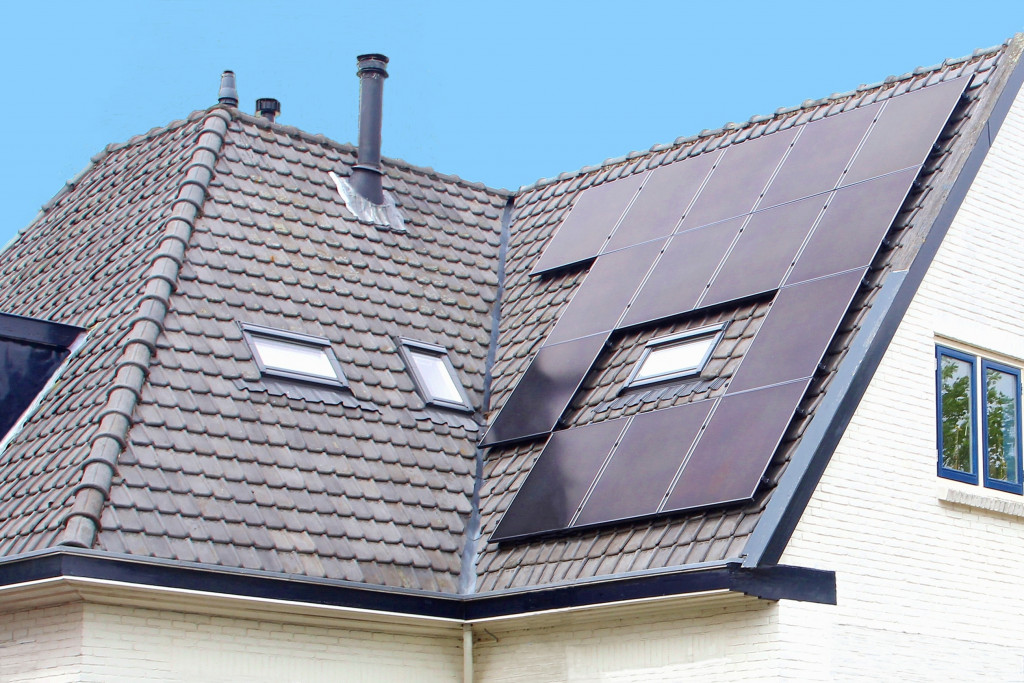Americans have been experiencing the harmful effects of climate change in the form of extreme weather conditions. That includes more severe hurricanes, droughts, and wildfires. All of these events can be linked to harmful greenhouse gas emissions produced by cars and power plants. These emissions are causing the Earth’s temperature to rise, which in turn is leading to more extreme weather conditions. That is a huge problem, as it leads to loss of property, displacement of people, and even loss of life.
Homes are also a significant contributor to harmful greenhouse gas (GHG) emissions in the United States. A 2020 study shows that about 20% of GHG emissions come from residential energy usage. That is why homeowners need to make their homes eco-friendly.
- How to Make Your Home Sustainable
- 1. Buy a smart meter.
- 2. Get a home energy audit.
- 3. Install a green roof.
- 4. Insulate your home correctly.
- 5. Make sure your home is leak-free.
- 6. Install energy-efficient windows.
- 7. Plant trees around your home.
- 8. Install a programmable thermostat.
- 9. Choose sustainable flooring.
- 10. Use a solar water heater.
- 11. Choose Energy Star appliances.
- 12. Replace your light bulbs with LED bulbs.
- 13. Wash your laundry in cold water.
- 14. Take shorter showers.
- 15. Defrost your fridge and freezer regularly.
- 16. Unplug electronics when not in use.
- 17. Use eco-friendly cleaning products.
- 18. Reduce, reuse, recycle.
- 19. Switch to sustainable transportation options.
- 20. Educate your family and friends about sustainability.
- 21. Advocate for sustainability in your community.
- Live Green
How to Make Your Home Sustainable
There are many things homeowners can do to reduce their homes’ emissions. Here are some of them.
1. Buy a smart meter.
A smart meter will allow you to track your home’s energy usage in real-time, so you can make changes to save energy.
2. Get a home energy audit.
That will allow you to identify the areas of your home where you are using the most energy, so you can make changes to reduce your usage.
3. Install a green roof.
A green roof is a roof covered in plants and vegetation. That helps reduce the amount of heat absorbed by the building, and it also helps filter the air.
4. Insulate your home correctly.
That will help keep your home warm in the winter and cool in the summer while using less energy.
5. Make sure your home is leak-free.
Sealing up leaks around doors and windows can help you save energy and money on your utility bills.
6. Install energy-efficient windows.
Windows are one of the most significant sources of energy loss in a home. Installing energy-efficient windows can help you save money on your heating and cooling costs.
7. Plant trees around your home.
Trees act as natural air filters, and they also help shade your home from the sun, reducing the amount of heat absorbed by the pavement and buildings in your neighborhood.
8. Install a programmable thermostat.
That will allow you to save energy by programming your home’s heating and cooling system to turn off when you’re not home.
9. Choose sustainable flooring.
Some types of sustainable flooring are cork, bamboo, and hardwood. You must check with the flooring company to ensure that the hardwood is certified by the Forest Stewardship Council.

10. Use a solar water heater.
That will reduce your reliance on traditional energy sources like natural gas or electricity. Renewable energy sources like solar and wind power are a vital part of the solution to climate change.
11. Choose Energy Star appliances.
Appliances such as refrigerators, dishwashers, and washing machines use a lot of energy. Replacing them with energy-efficient models certified by the U.S. Environmental Protection Agency can help you save money on your utility bills.
12. Replace your light bulbs with LED bulbs.
LED light bulbs use far less energy than traditional incandescent light bulbs. They also last much longer, so you’ll save money in the long run.
13. Wash your laundry in cold water.
Washing your laundry in cold water can save a lot of energy, and it’s just as effective as washing in hot water.
14. Take shorter showers.
Shorter showers use less water than baths, and they also help conserve energy.
15. Defrost your fridge and freezer regularly.
That will help them run more efficiently and save you money on your utility bills.
16. Unplug electronics when not in use.
Many electronics still use energy even when turned off, so unplugging them when not in use can save you a lot of money.
17. Use eco-friendly cleaning products.
Many eco-friendly cleaning products are available on the market today. They are biodegradable and non-toxic, and they often work just as well as traditional cleaners.
18. Reduce, reuse, recycle.
This old saying is still as true today as it ever was. Recycling helps reduce the amount of waste that goes into landfills, and it also uses less energy than creating new products from scratch.
19. Switch to sustainable transportation options.
Switching to sustainable transportation options like walking, biking, public transportation, or carpooling can help reduce your home’s greenhouse gas emissions.
20. Educate your family and friends about sustainability.
Children are the future, and teaching them about sustainability at an early age will help them make more environmentally friendly decisions when they grow up. The more people understand the importance of sustainability, the more likely we will see a change in our society.
21. Advocate for sustainability in your community.
There are many ways to get involved in your community and advocate for sustainability. Making your voice heard on sustainability issues is crucial to help promote change in our society.
Live Green
Sustainability is about living in harmony with nature. It involves reducing the environmental and social impacts of our actions while positively affecting human health and well-being. These tips can help you achieve this goal at home by promoting responsible homeownership that keeps your home green.






